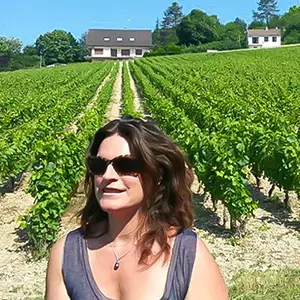Everyone talks about Capri, Mykonos, Ibiza. Let them.
Corsica isn’t part of that conversation and that’s exactly why you should go. You come for the beaches. Wild, empty coves you reach by boat, mornings on the water, barefoot lunches in hidden bays. You stay in places that feel like secrets: discreet luxury, views for days, and chefs who work with what grows right outside the window. There’s yachting, yes, and unforgettable meals, but also something deeper I didn’t expect.
What struck me most were the people. Encounters that weren’t planned or polished, just honest, passionate, and generous. A winemaker showing me a grape variety his grandfather fought to save. A beekeeper offering a spoonful of honey that tasted like the entire island in one bite. A charcutier whose pigs live wild in the chestnut forests, and who still follows the rhythms of the mountain seasons. Corsica has its own tempo. Its own pride. It’s luxurious in the most meaningful way: rooted, rare, and real. Here’s a glimpse into the island I discovered, through its wine, its olive oil, its cheese and spirits. And if you’re ready to experience Corsica like this, we’ll take you there.
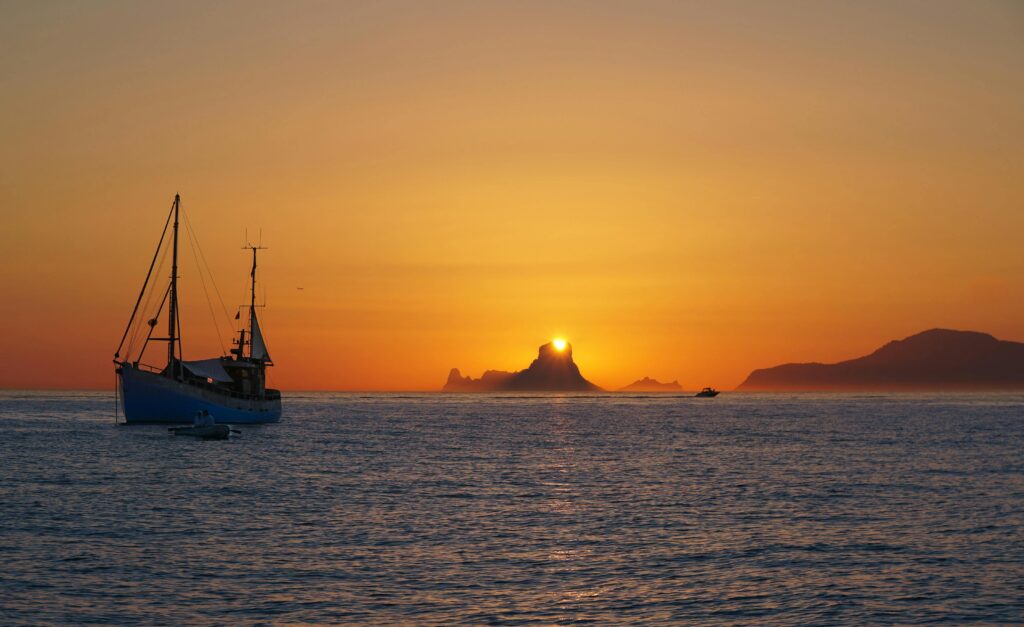
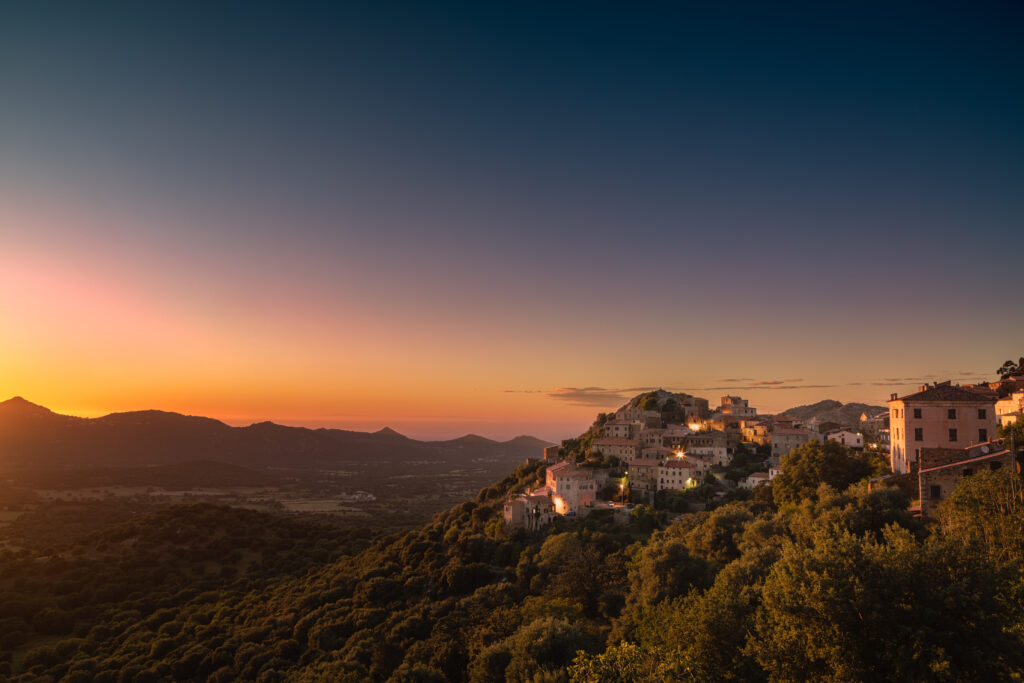
The Untamed Vineyard: Corsica’s Liquid Rebellion
Step into a Corsican vineyard and you’ll immediately notice the difference. Forget the manicured rows you might find elsewhere.Here, ancient pre-phylloxera vines twist and spiral from decomposed granite soils, their roots diving deep into bedrock. Touch these gnarly trunks, some centuries old, and you’re touching living history. The island’s nine distinct AOCs each tell their own story, from Patrimonio in the north to Figari in the south. When you talk with the winemakers, their fierce independence becomes immediately apparent: many have deliberately turned their backs on international varieties, choosing instead to preserve grapes you simply won’t encounter elsewhere. At Clos Canarelli in Figari, Yves Canarelli speaks of his vines like they’re family members. Walking through his biodynamically certified vineyards (since 2006), he’ll point out the Carcaghjolu Neru plants, a variety he personally rescued from extinction. Taste his Costa Nera cuvée, and you’ll understand why he went to the trouble: each sip carries wild herbs, worn leather, and a minerality so distinctive you can almost feel the granite beneath your feet.
Open a bottle of Canarelli’s experimental Amphora series at home, and you’ll experience something that defies easy categorization. The clay vessels used for fermentation and aging create wines of astonishing delicacy: the tannins possess a feather-light finesse, more a whisper of silk than a scrape of grit.. His Tarra di Sognu bottlings, from a newer terroir near Bonifacio, have earned 95/100 from “La Revue du Vin de France” for good reason: they capture something essential about this windswept corner of the Mediterranean that no amount of technical winemaking can replicate. Perhaps most beautiful is his Bianco Gentile (“BG”), made from another rescued indigenous variety that somehow produces wines of remarkable freshness despite Corsica’s summer heat. When I first tasted it, the contradiction was striking. How could something this vibrant and delicate come from such a sun-drenched place? This wine embodies Canarelli’s philosophy so perfectly, sometimes released without official appellation, trusting that quality speaks louder than paperwork.
Further north at Domaine Sant Armettu, winemaker Paul Dubrule’s Solis offers something rare in today’s wineworld: a natural wine that doesn’t wear its naturalness like a badge. Fermented in amphora with six indigenous varieties, it somehow maintains discipline amid its wildness, juicy and alive but with structure and an almost saline minerality that tells you immediately it could only come from near the sea. The domain’s signature L’Ermite red offers an uncompromising expression of pure Sciaccarellu, a thin-skinned native grape that creates wines of remarkable perfume. I’ve watched visitors taste it for the first time, their expressions changing as they encounter something familiar (red fruit, spice) transformed into something they’ve never experienced before. The white version focuses on Vermentinu that tastes nothing like its mainland cousins: there’s a saline quality and vibrant acidity that speaks of ocean spray and mountain breezes.
What you’ll notice in every good Corsican wine is the influence of the maquis, that dense, aromatic scrubland covering much of the island. These wild herbs don’t just grow nearby; their essential oils become airborne and settle on grape skins, becoming part of the wine’s fundamental character. Close your eyes while drinking, and you might catch whispers of thyme, rosemary, myrtle, and immortelle, a signature botanical complexity impossible to manufacture. The island’s rugged topography means many vineyards cling to slopes where machines simply cannot go. At Domaine Comte Peraldi in Ajaccio, vines grip 45-degree inclines where every cluster must be tended and harvested by hand. This isn’t boutique winemaking by choice; it’s the only way it can be done here. When you taste these wines, you’re tasting human determination as much as fruit and soil. These bottles aren’t just accompaniments to a meal; they’re liquid history in the most literal sense, a glimpse of what European wine might have remained had it not taken the turn toward standardization and global markets. Each bottle tells a story of resistance, not just to phylloxera, but to the homogenizing forces of the modern world.
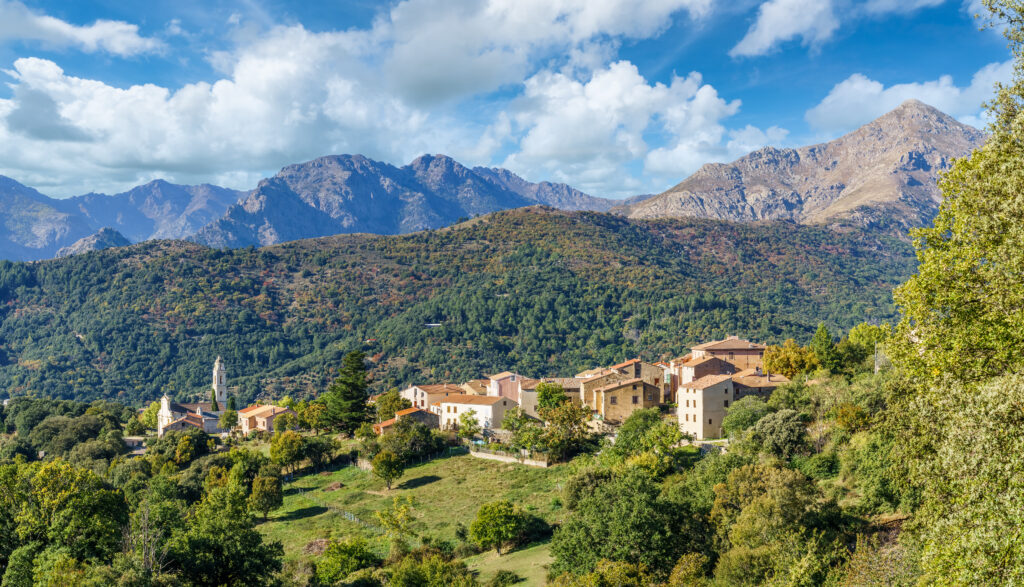

The Spirit of Maquis: Distilling the Untamable
Stand in the Corsican maquis on a hot summer day, and you’ll be enveloped by an invisible cloud of aromatic oils: rosemary, myrtle, immortelle, wild mint. Local distillers don’t just observe this phenomenon; they capture it in their spirits with an authenticity that makes “botanical” gins from elsewhere seem like pale imitations.
Domaine Mavela‘s P&M whisky might be the world’s only truly Mediterranean-style whisky. The first time I tasted their Signature expression, I was struck by how it turned everything I knew about whisky sideways. Matured in ex-Muscat barrels from Domaine Gentile, it offers a softness and aromatic complexity that doesn’t try to mimic Scotland or Japan but instead tastes unabashedly Corsican: subtle notes of chestnut, wild herbs, and a hint of sea salt. Their Red Oak expression, aged in ex-red wine casks from the same Corsican domain, adds yet another layer of island character.
At Distillerie L.N. Mattei, they don’t produce their Cédratine year-round because they can’t, and won’t. This oldest of Corsican liqueurs depends entirely on the brief seasonal availability of the cédrat, a citron-like fruit whose aromatic oils and bitter pith create something unforgettable. When you taste true Cédratine, you’re tasting a specific moment in Corsica’s annual cycle, something no factory production could ever capture. For more about these island spirits gaining recognition beyond Corsica’s shores, the France 3 Regions site offers fascinating insights.
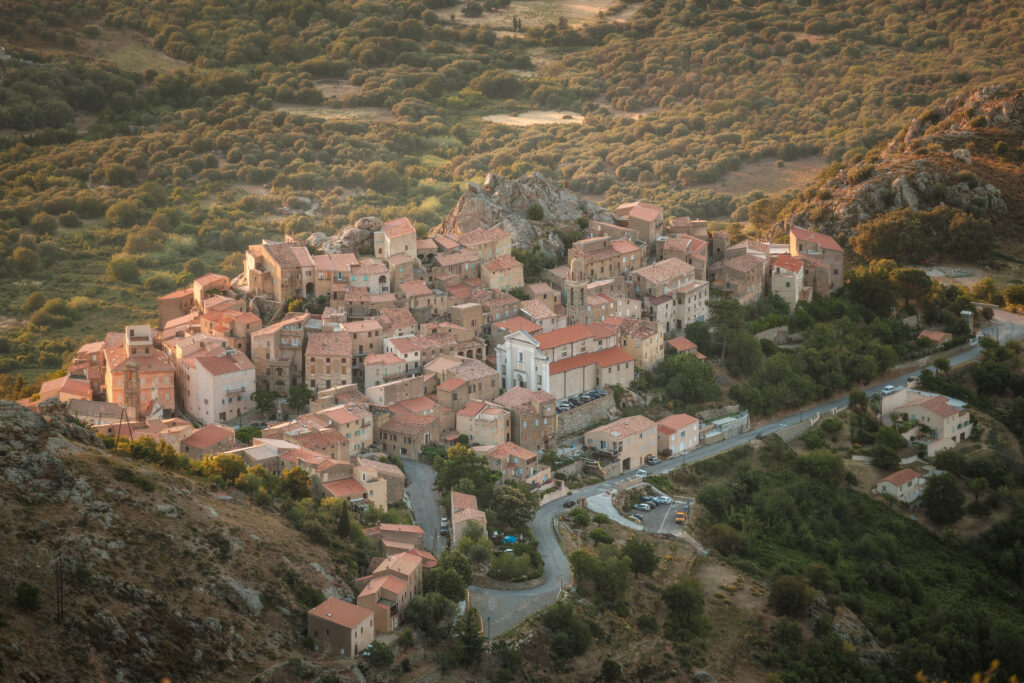
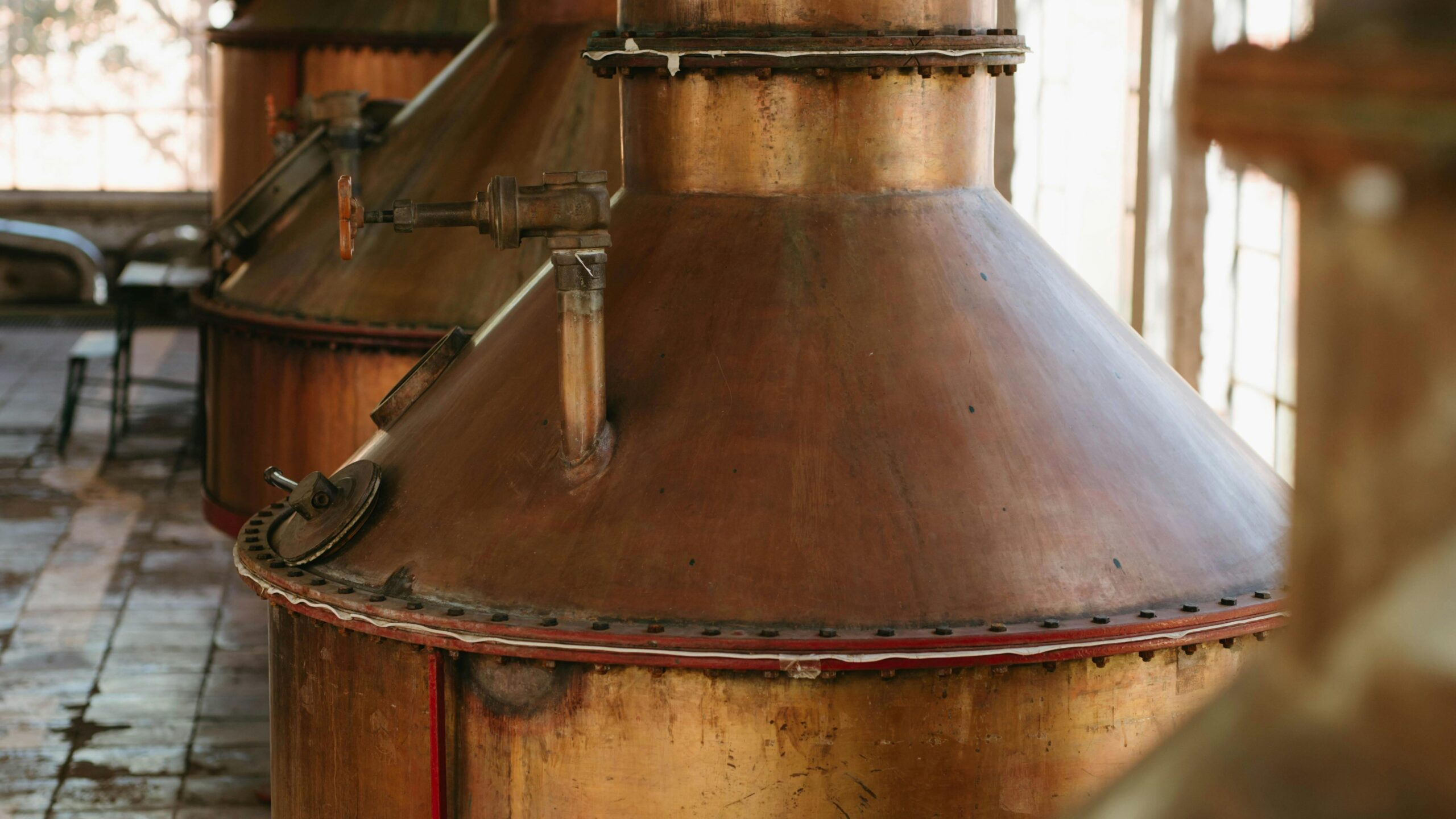
Black Pig Alchemy: The Last True Charcuterie
The word “charcuterie” has been borrowed and diluted around the world, but in Corsica, it remains something profound: an art form defined by a single heritage breed, the Porcu Nustrale (Corsican black pig). These aren’t commercial animals but semi-wild creatures that roam freely in chestnut groves and oak forests. When you taste their meat, you’re tasting the forest itself.
Visit Charcuterie L’Usucorsu in Olivese, and Pierre-Antoine and Julie Poli might take you to see their pigs, animals that follow seasonal transhumance between mountain elevations just as their ancestors have for centuries. Their Prisuttu (ham) isn’t just hung to dry; it undergoes an alchemical transformation over 18-36 months in mountain air chambers. The natural molds and bacteria that develop aren’t seen as contaminants to be prevented but essential collaborators in creating flavor that industrial producers can only mimic with additives.
The true miracle is their Figatellu, a liver sausage that represents the pinnacle of Corsican charcuterie. Made only during winter slaughter when cold temperatures naturally inhibit harmful bacteria, authentic Figatellu appears just a few months each year. Unlike mass-market versions, true Figatellu develops a protective white mold and must be cooked before eating: a process that fills your kitchen with an aroma so profound it might bring tears to your eyes: liver, wild herbs, and smoke in perfect harmony.
Liquid Gold: The Oil from Ancient Trees
In Corsica’s olive groves, nothing happens quickly and that’s exactly the point. At Domaine de Marquiliani in Aghione, Anne Amalric works with varieties like Sabine and Ghjermana that have no counterparts on the mainland. Her signature La Fruitée Douce comes from trees growing on rocky slopes where constant sea breezes stress the fruit. The resulting oil carries a delicate almond note and subtle minerality that speaks of place in a way that more fertile regions simply cannot match. What makes these oils special goes beyond variety. Many groves sit at 250-400 meters above sea level, where significant day-night temperature swings slow ripening and concentrate flavors. At Oliu Ottavi in Ghisonaccia, their focus on the Ghjermana di Casinca variety produces oils with remarkable shelf stability from naturally high polyphenol content. Unlike commercial oils that fade quickly, these develop additional complexity over months, a living product that rewards patience.
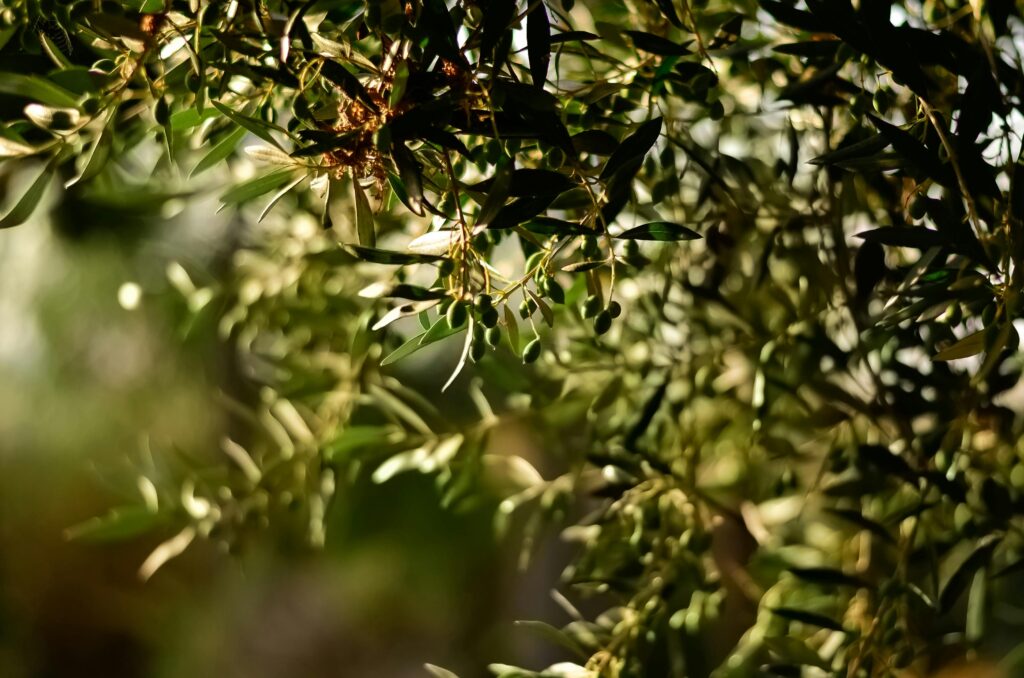
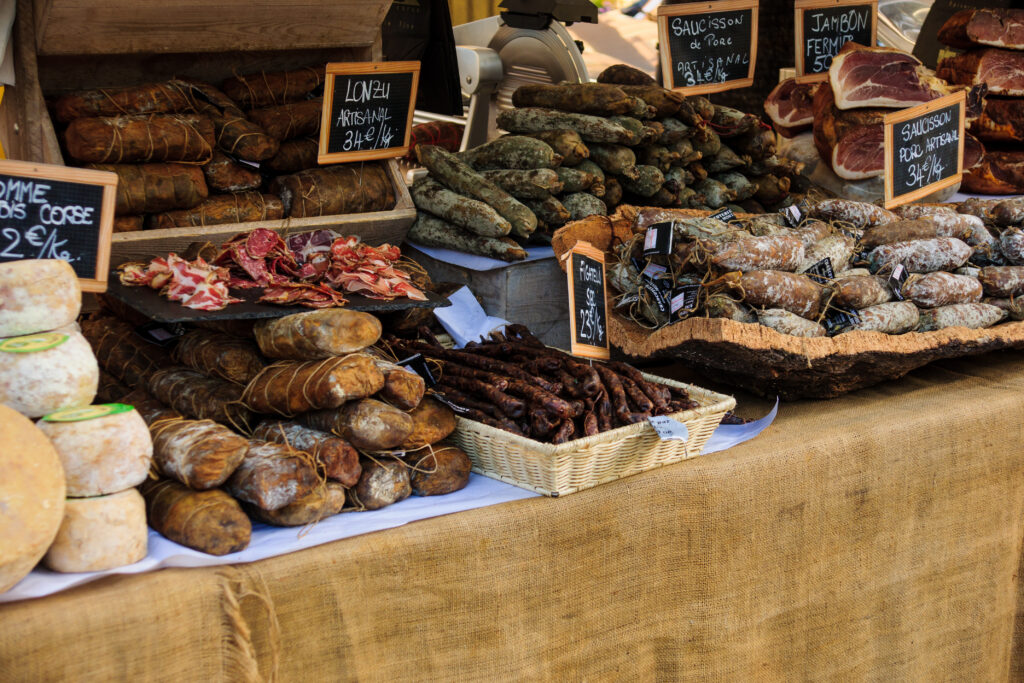
The Living Cheese: Raw Complexity in Its Purest Form
Ask any Corsican about Brocciu, and you’ll likely inspire passionate storytelling. This emblematic fresh cheese carries AOP protection, but its soul can only truly be experienced when tasted fresh from a mountain shepherd’s hands, still warm from production.
Unlike industrial fresh cheeses with their stabilizers and preservatives, true Brocciu from producers like Fromagerie Alta Cima transforms daily, its fleeting nature inseparable from its identity. Made from the whey of sheep or goat milk, it captures that magical moment when proteins coagulate into delicate curds. Place some on your tongue, and it dissolves with notes of fresh cream carrying subtle herbal whispers from the animals’ wild forage.
The more aged cheeses like U Capraltu tell a different story. These aren’t cheeses that simply dry out; they evolve continuously in stone cellars where indigenous microflora, bacteria and molds unique to each location, create flavors impossible to replicate elsewhere. Each wheel develops its own personality through a collaboration between cheesemaker, milk, microbes, and time: the definition of artisanal production. For a deeper exploration of Corsica’s remarkable cheese heritage, visit Gusti di Corsica and Le Guide du Fromage, which offer wonderful insights into these unique expressions of the island’s traditions.
The Last Pure Honey: Corsica’s Liquid Amber
The first time you taste authentic Corsican honey, you realize most of what you’ve had before barely deserves the same name. The Mele di Corsica AOP (the only honey appellation in France alongside Sapin des Vosges) isn’t just a marketing designation but recognition of something truly irreplaceable and increasingly endangered by climate change and disease.
The magic begins with the endemic Apis mellifera mellifera Corsica bee subspecies, which has evolved in isolation to forage on flora found nowhere else. At Miel du Cap Corse, the honey produced reflects traditions maintained across generations.
Cap Corse itself, that finger-like peninsula reaching into the Mediterranean, creates extraordinary microclimates. Within just a few kilometers, you move from sea-level scrubland to high mountain meadows, each with distinct plant communities. This concentrated biodiversity translates directly to the honey’s complexity. The most distinctive offering from Miel du Cap Corse is their Miellat du Maquis (Maquis honeydew). Technically not even honey in the conventional sense, but rather plant sap first processed by aphids, then collected and transformed by bees. Open a jar and you’ll find something profoundly different: dark, almost savory, with notes of caramel, malt, dried fruits, and a subtle bitterness that perfectly balances its sweetness.
Watch these beekeepers practice transhumance: moving hives between elevations to follow the blooming seasons, and you’ll understand how their honey captures fleeting moments in Corsica’s annual cycle. Spring honey from coastal areas carries delicate floral perfumes that disappear within weeks. Summer mountain honey offers robust herbaceous character from high-altitude wildflowers. Autumn honey from chestnut groves delivers distinctive tannins and a gentle bitterness sought by those who understand honey can be as complex as fine wine. What you won’t find in these jars are the processes that make commercial honey shelf-stable and consistent. True Corsican honey remains unfiltered and unpasteurized, a living food that crystallizes and evolves, each jar capturing an unrepeatable moment in the dance between flowers, bees, and humans.
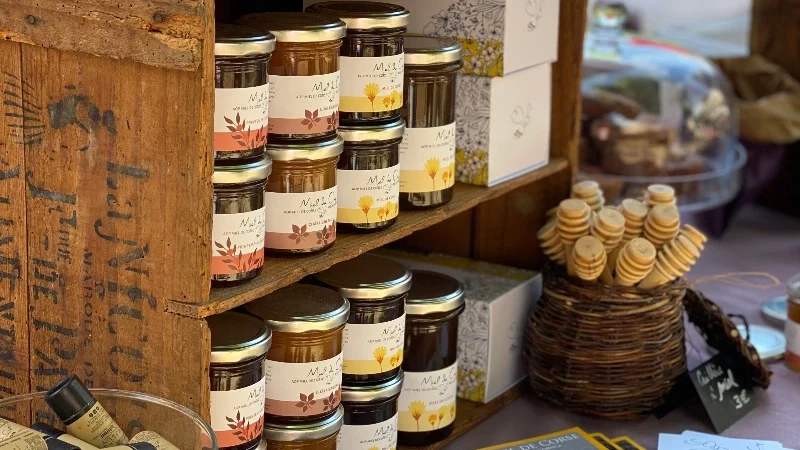
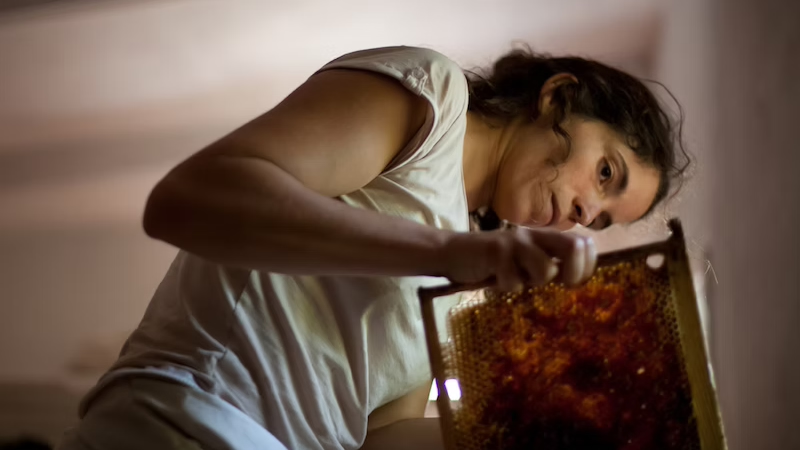
Beyond Consumption: Connecting with Corsica’s Soul
What ties these foods and drinks together isn’t clever branding but something far more profound—a stubborn resistance to standardization. Each represents a direct thread connecting past to present, the hand of the artisan to the heart of the consumer. The true value of these products isn’t captured in price tags but in their increasing rarity—each bottle, wheel, or jar preserves cultural knowledge that might otherwise vanish forever. When you enjoy them, you’re not just consuming something delicious; you’re helping maintain traditions that might otherwise slip away.
There’s something profound about sitting at a rustic table in the stone villas at Clos Canarelli, bouncing along mountain tracks in a 4×4 to see the black pigs at L’Usucorsu, or watching beekeepers at Miel du Cap Corse carefully extract frames from their hives. These moments connect you to something genuine in ways that luxury packaging never could.
In our world of next-day delivery and instant gratification, there’s profound joy in encountering things that can’t be rushed or mass-produced: authentic expressions of place that require us to meet them on their terms, not ours. Sitting at a mountain shepherd’s table, tearing fresh bread and spreading just-made Brocciu while drinking wine from vines visible through the window might be the simplest meal you’ll have in Corsica, and the one you’ll remember forever. To understand more about how Corsica’s winemaking traditions evolved through centuries of history, visit Luvinu. Their deep dive into the island’s viticultural past helps explain why today’s wines taste like nowhere else on earth.


